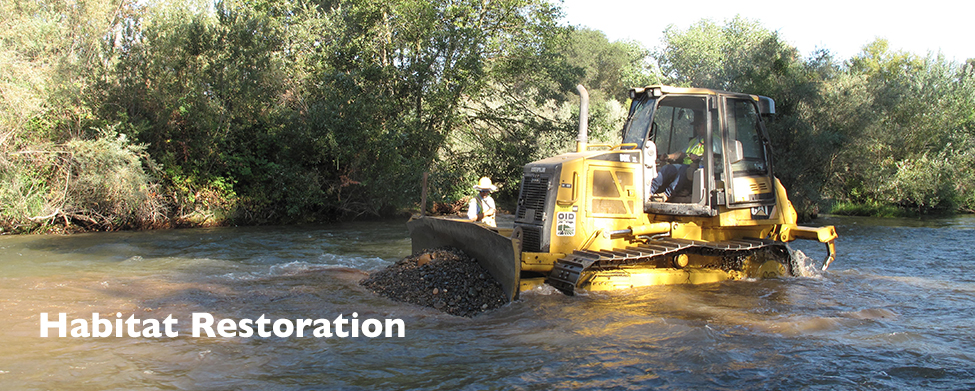
The state proposes to increase unimpaired flows on the Stanislaus River, taking water away from agriculture, storage and other uses to devote to fish and Delta health. But there is no peer-reviewed scientific journal or research that shows more water equals more fish. Local scientists say habitat restoration and predation control are far more effective ways to increase the number of salmon and rainbow trout/steelhead in the river. The fish are protected under the state and federal Endangered Species Acts.
Population counts conducted throughout the year by FISHBIO suggest that the river currently has enough habitat to support about 2,500 female salmon and approximately 1.5 million juvenile salmon. Similar studies estimate there are 10,000-20,000 resident rainbow trout, which produce thousands of young fish each year. Some of those develop into steelhead trout, which migrate to the ocean and occasionally return to the river to spawn, while others remain in the river throughout their life. Improving habitat could allow more fish to live in the Stanislaus River.
We believe there are four key components to increasing fish populations:
- Habitat Restoration
The best example of this is at Honolulu Bar. The $1.1 million joint project of the Oakdale Irrigation District and U.S. Fish and Wildlife Service was completed in 2012. The effort focused on a 2½-acre site that was part of a larger gravel dredge bar in the river about halfway between Oakdale and Knights Ferry in northeastern Stanislaus County. The intent was to restore and, in some cases, create vital habitat for adults to spawn and juvenile fish to thrive until they begin their journey downstream through the Delta and San Francisco Bay to the Pacific Ocean. - Gravel
Adult fish need gravel to successfully spawn and lay their eggs; young fish need it as part of a healthy habitat. Decades of long-ago dredging and mining rearranged the rocks in the river. In some places, gravel pieces were too large for fish to spawn. In others, there wasn’t enough gravel at all. In the Honolulu Bar project, rock and dirt were screened and separated, and the quality material reused. It was part of more than 3,300 cubic yards of gravel used to create spawning beds and juvenile habitat. This should be replicated in other parts of the river. - Floodplain Habitat
Again, Honolulu Bar is an excellent example. There, heavy machinery was used to lower an island, allowing water to flow over it, especially in the spring. A choked side stream on the north side of the island that often suffered from low flows – stranding salmon nests and young fish — was reconnected to the main river. Non-native vegetation was removed and box elders, willows and cottonwoods were planted to shade the river and support insects that fish eat. - Predation
This is one of the biggest barriers to increasing fish populations. The National Marine Fisheries Service’s 2009 Draft Recovery Plan for salmon and steelhead found predation to be one of the most important stressors. A 2014 study by the California Department of Water Resources found that “predation plays a large role in the survival rates of out-migrating salmon.” An estimated 95% of young salmon and steelhead are eaten by predators before they ever reach the Delta. Non-native bass and other predators lurk in the deep pools between Riverbank and the confluence of the Stanislaus and San Joaquin rivers, preying upon young fish. Rep. Jeff Denham has introduced legislation in Congress that would authorize a multi-agency pilot program over five years to identify the best ways to reduce predation. SSJID and OID support that idea.
